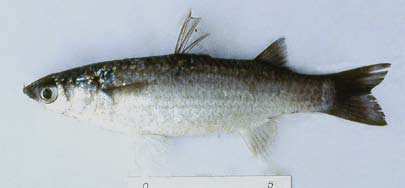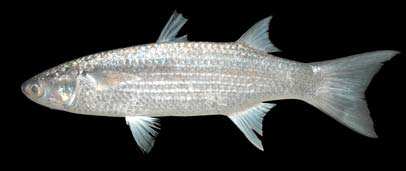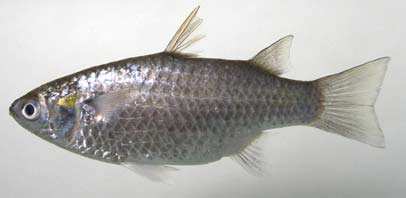MUGILIDAE
Mullets
By Koichi Shibukawa
 Chelon parsia |
 Chelon subviridis |
 Crenimugil crenilabis |
 Ellochelon vaigiensis |
 Moolgarda pedaraki |
 Moolgarda seheli |
 Paramugil parmatus |
|
Medium to large sized (up to 100 cm) moderately slender fishes. Body subcylindrical, compressed posteriorly; lateral line absent. Head subcylindrical, flattened dorsally in many species; eyes often partly covered by well-developed adipose eyelid; mouth moderately small, terminal or inferior; teeth minute or absent. Two dorsal fins well separated one another; first dorsal fin with IV pungent spines, the anterior three close together at base; second dorsal fin with I spine and usually 9-10 soft rays; anal fins with II-III spines and 7-12 soft rays; pectoral fins high on side of body; pelvic fins subabdominal, with I spine and 5 rays; caudal fin lunate, emarginate or nearly truncate. Scales cycloid or ctenoid, moderately large; enlarged axillary scales usually present at base of pectoral and pelvic fins. Color: head and body more or less silvery, darkened dorsally; fins transparent, dusky or yellowish. Similar families occurring in the area. Atherinidae: first dorsal fin with III-VIII flexible spines, anterior three spines separate at base; a single analfin spine. Remarks. Fast swimming fishes, found in coastal marine waters (usually to depths of 20 m), estuaries, or, often, enter freshwater areas. Frequently schooling. Feed on detritus or small organisms. Many species are important to fisheries, caught by various nets (e.g., seines, cast nets, and gill nets) and usually marketed fresh, frozen, salted or boiled; roe may be also marketed; often used as live bait in tuna fishing. Generic assignment follows Senou (2002) and Ghasemzadeh et al. (2004). |

|
|